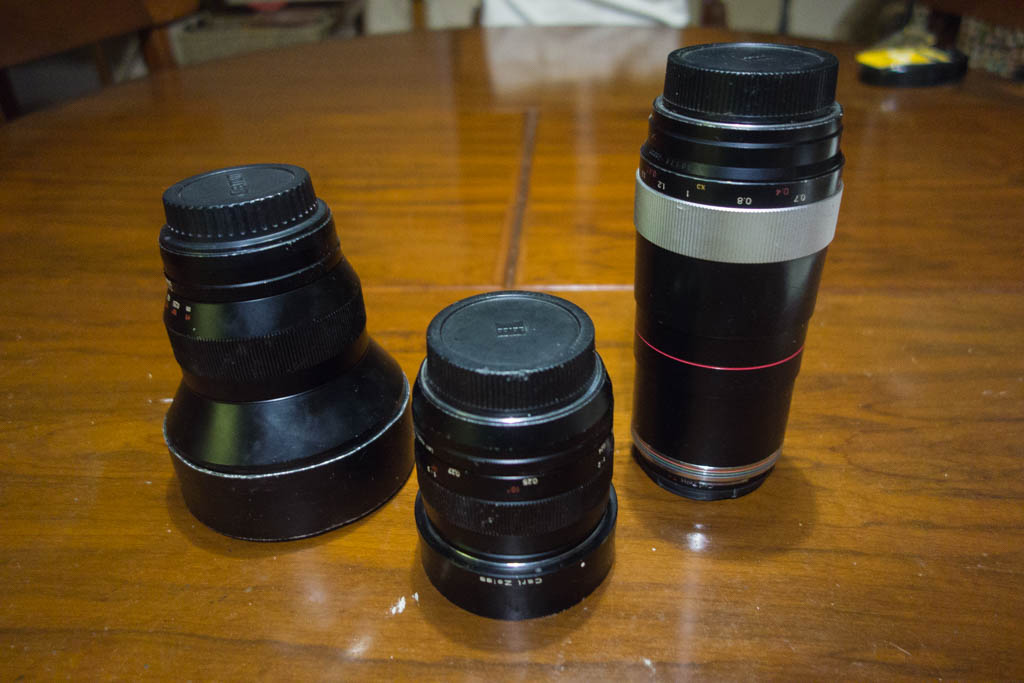
I am not an equipment “queen”, one of those people who are more concerned with the equipment than doing the actual work for which it designed. But I do know that “the glass”, or lenses, are at the heart of the photographic documentation of rock art. Image quality is the goal and to get the best pictures one needs the best glass. Choosing the lenses and purchasing them was one the most exciting things I have done in my professional life.
So, let me introduce my star performers, my companions in the field, the lenses that get the job done. They are manual focus lenses and have none of the more advanced features such as image stabilisation and so on. But that moment when one turns the focus ring and suddenly everything jumps into focus is one of the pleasures of rock art photography.
These lenses started their working life recording rock art sites in the uKhahlamba-Drakensberg in KwaZulu-Natal and as my colleagues and I worked with them they got names and personalities.
The big, fat Zeiss wide angle lens is called isidudla, the fat one. No space is too cramped or (mostly) too big for the 15 mm isisdudla to cover. It loves landscapes too, devouring the wide open spaces in its gaze. The colours and resolution are supreme and I always look forward to viewing them when I get back to camp after a day’s work.
Then there is encane, the little one. This is a 50 mm Zeiss macro lens that I use a lot for overall photography of clusters of rock art and also for close up work. It is smaller than the others but it is very solidly built. When you hold it in your hand you can feel it is not a lightweight. No plastic, or even aluminium inside. Encane can take images up to half life size and is sharp and clear. Once I’m inside a site this is the lens that works the hardest.
Last but not least is isilenda, the slender/thin one. As the name suggests this lens, a second (third/fourth?) hand lens I bought on the internet is much longer than the others. It is a 125 mm Voigtlander, believed by some to be one of the best macro lenses ever, although it is no longer made. With its ability to take life-size images of tiny things, this lens opens worlds within worlds. It is one of the most exciting lenses to work with. One can see details of paintings or insects or plants or whatever else you like with crystal clarity. It is the eagle’s eye that can discern the smallest detail.
I cannot talk about these lenses without mentioning another comrade in arms – the tripod. I take a lot of photographs at really slow shutter speeds and small apertures so the camera must be absolutely stable or the images will be blurred. That’s why I often mount the camera on the tripod. It goes everywhere with me. When it’s on site it can bring the camera to exactly where I want it, whether that is standing on all three legs on the level ground, or half way up the back wall of an overhang. It’s like a goat that can graze anywhere it wants to, and so I call it imbuzi, the goat.
This lens cap fell 20 m over a cliff and landed in a pool. I panel-beated it and am still using it
Just as human beings get dusty, tired and scratched when out in the field, so the lenses also get their scratches and dents. I have a lens into a mountain stream and dropped a large, steel lens cap 20 m over a cliff. But dust is the biggest problem. Rock art sites are dusty places and the lenses spend the whole day inside these places. Try as I might to keep the lenses closed and in bags within bags when Im not using them, inevitably it seems that they get dirty. After finishing several weeks of fieldwork they have to be serviced, which is very expensive because the lens has to be dismantled, all the seals replaced (which you have to get from Europe) and then reassembled. But what else can one do? No point spending time and money getting to the sites and then using dirty equipment is there?
The lenses are core element of my equipment. I chose the best back as I carry them though the landscape, to their weight in my hand and their cool metallic feeling. They take me to places I would otherwise never have got to. And if I look after them, they will serve me for the rest of my life. Why settle for less?